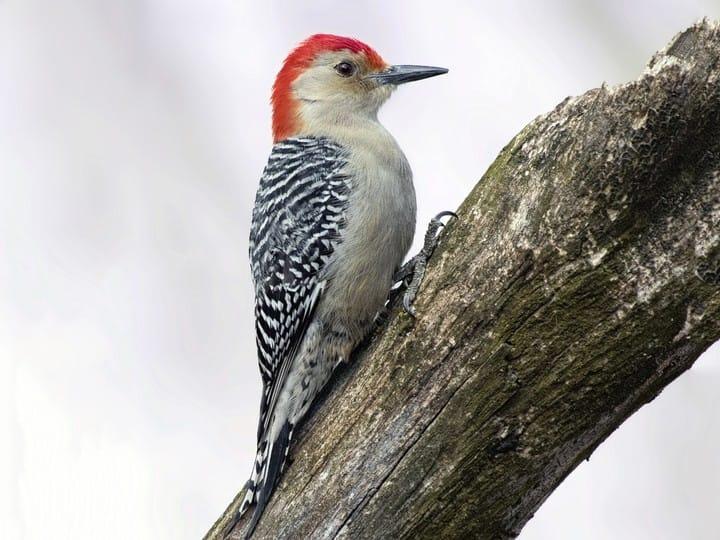Woodpeckers in Florida Population: Types Overview and Conservation
Woodpeckers: A Comprehensive Guide to Understanding These Unique Birds
Woodpeckers, with their distinctive actions and physical qualities, have actually long captivated the inquisitiveness of ornithologists and nature fanatics alike. As we explore the detailed anatomy, varied species, and ecological significance of woodpeckers, a deeper admiration for these unique birds and the secrets they hold unfolds.

Woodpeckers' Drumming Actions
Woodpeckers show a balanced and specific drumming actions that offers different vital functions in their lives. This behavior is primarily related to interaction, region protection, and foraging. The unique drumming sound is created by the quick pecking of their beaks versus difficult surfaces such as tree trunks, branches, or also steel items.
Communication is a crucial facet of woodpecker habits, and drumming plays a considerable duty in this process. Woodpeckers use drumming to develop their existence, attract mates, and keep contact with their companions and children. The frequency, strength, and duration of drumming sequences share particular messages to other woodpeckers in the location.
Along with interaction, woodpeckers utilize drumming behavior for area defense. Woodpeckers in Florida. The loud and recurring drumming serves as a warning to possible intruders, signifying that the area is currently declared. By developing their area via drumming, woodpeckers minimize the likelihood of problems over important sources such as food and nesting sites
In addition, woodpeckers likewise use drumming as a foraging technique. The balanced pecking helps them find pests hiding under the bark of trees by creating resonances that disrupt the victim's camouflage. This behavior showcases the flexibility and resourcefulness of woodpeckers in utilizing their drumming abilities for multiple vital objectives.
Distinct Adjustments for Tree Climbing
Having mastered the art of drumming to interact, safeguard territory, and forage, woodpeckers have advanced unique adaptations that promote their impressive climbing capabilities in their arboreal environments. One vital adaptation is their customized feet. Woodpeckers have zygodactyl feet, with two toes directing onward and two toes pointing in reverse. This plan supplies a solid grip on the vertical surface areas of trees, allowing them to stick easily while foraging for insects or drumming. In addition, woodpeckers possess stiff tail feathers that function as a prop to sustain their bodies as they climb. These tail feathers supply stability and equilibrium, making it possible for woodpeckers to navigate up tree trunks with accuracy and agility.
Additionally, woodpeckers have effective neck muscle mass and a distinct head framework that help in their climbing capacities. Their strong neck muscular tissues permit them to quickly eat tree bark without experiencing whiplash, while their thick head and little brain serve as shock absorbers, protecting them from the influence of repeated drumming. These adaptations collectively enable woodpeckers to browse the upright world of trees with efficiency and poise.

Function of Woodpeckers in Ecosystems
Playing an essential role in forest environments, woodpeckers add considerably to the equilibrium and wellness of their habitats through their special actions and communications with other types. Among the crucial eco-friendly functions of woodpeckers is why not try these out their role in managing insect populaces. By foraging for pests under the bark of trees, woodpeckers aid regulate pest populations, stopping episodes that can damage the total health of the forest. Additionally, woodpeckers create cavities in trees that function as important nesting websites for a selection of various other bird varieties, advertising biodiversity within the ecological community.
Additionally, the drumming and vocalizations of woodpeckers play a crucial function in communication and territory facility. These audios not only serve to attract friends however likewise help define borders in between different woodpecker territories, lowering problems and promoting a harmonious conjunction within the forest community. Generally, the existence of woodpeckers in forest ecological communities highlights their significance as keystone types, affecting the dynamics and operating of these environments in diverse methods.
Composition: Specialized Beaks and Feet
In the intricate internet of forest environments, the specialized beaks and feet my sources of woodpeckers are important adjustments that enable them to meet their crucial environmental duties. Woodpeckers possess one-of-a-kind anatomical functions that are especially developed to help them in their foraging and nesting actions.
The most unique attribute of woodpeckers is their strong, chisel-shaped beaks. These beaks are completely adjusted for drilling into wood to reveal insects, larvae, and sap covert underneath the bark of trees. The solid muscles and strong framework of their beaks permit woodpeckers to eat a rate of as much as 20 times per secondly without creating damages to their heads.
Additionally, woodpeckers have specialized feet that aid in their acrobatic climbing up capacities. Their feet have 2 toes pointing forward and two toes directing in reverse, giving a solid grip on vertical surfaces (Woodpeckers in Florida). This distinct foot plan, together with tight tail plumes that work as an encouraging prop, allows woodpeckers to hold on to tree trunks and branches effortlessly while they search for food or excavate nesting cavities
Woodpecker Species Diversity
What elements contribute to the amazing diversity of woodpecker types across different habitats and regions? Woodpeckers are a varied team of birds located throughout different environments worldwide, with over 200 recognized types displaying adaptations to different environments. One key variable driving this variety is the schedule of appropriate habitats. Woodpeckers have evolved to live in an array of settings, from woodlands and woodlands to grasslands and deserts, each offering one-of-a-kind difficulties that have influenced the advancement of unique woodpecker types.
These adaptations allow woodpeckers to forage successfully in their respective habitats, lowering competitors among types and advertising particular niche differentiation. Furthermore, geographical seclusion and historic factors have played a function in forming the circulation and diversity of woodpecker species, leading to the broad variety of specialized adjustments seen in these remarkable birds.
)
Conclusion
In final thought, woodpeckers are fascinating birds that display unique drumming habits, specialized adjustments for tree climbing, and play essential duties in communities. With a varied range content of woodpecker types located worldwide, these birds are vital for keeping the health and equilibrium of woodlands and forests.